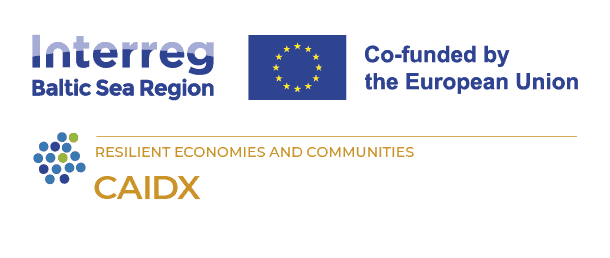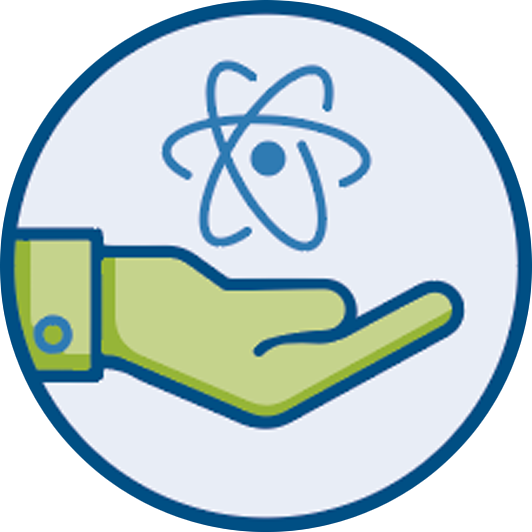
Navigating the Development of AI Solutions for Healthcare
15 August 2025
Introduction
Understanding the process of developing an AI solution for use in healthcare can seem both complex and overwhelming. The development involves many different stakeholders who must be engaged at the right times if the AI solution is to meet all applicable requirements – from regulatory compliance to data management.
For clinicians, this can be particularly challenging, as they may not be familiar with the many technical, legal, and organizational steps involved in the development process. As a result, even good ideas for AI solutions often remain unrealized or unimplemented. At the same time, companies frequently lack the clinical understanding needed to develop relevant solutions, which further contributes to the gap between promising ideas and actual implementation.
This raises the question: Who should a clinician contact if they have an idea for an AI solution? And how can the process be best structured? To address these questions, we have developed a digital, interactive guide that brings together all key stakeholders – from clinicians, companies, and data engineers to legal departments, project managers, and regulatory experts – offering a clear overview of the journey from initial idea to the successful deployment of AI in healthcare.
Description of the output
Our output is a digital, interactive guide on a website, which healthcare professionals can use in collaboration with other stakeholders and professional groups to develop AI solutions for the healthcare sector across Europe. The guide is designed for use across EU countries and takes into account that terminology and roles may vary from country to country. It therefore serves as a general, high-level tool for gaining an overview of the AI development process from idea to deployment.
The guide highlights the importance of interdisciplinary collaboration in the development of AI solutions, ensuring that projects do not stall but can be successfully realized and implemented.
The interactive guide includes:
- Phases based on TRL levels – each phase begins with an introduction and a description of expected outputs.
- Actions within each phase, outlining the tasks that must be addressed to ensure all processes are covered – from regulatory requirements to data management.
- Filter functionality, allowing tasks to be filtered by stakeholder to provide an overview of who should be involved and when.
- Stakeholder descriptions, clarifying responsibilities and areas of expertise, as well as supporting the understanding of varying terminology in different countries.
- An iterative process model, illustrating that AI development in healthcare is not a linear process but requires repeated adjustments along the way.
The guide provides users with a structured overview of the necessary action points while also emphasizing that the real-world process is often far more dynamic and requires close collaboration.
About the process and our output
The development of the guide has taken place in close collaboration with stakeholders across disciplines and with diverse experience in AI. Numerous internal consortium meetings were held to shape the strategic approach and ensure that the framework behind the guide is both robust and applicable across countries and professional groups.
A key part of the process involved validating the framework through dialogue with active AI projects and solutions. This validation was carried out through structured data collection and knowledge generation, drawing on input from 13 AI projects based in Denmark, Finland, Germany, Poland, and Sweden.
The projects represent a broad spectrum of clinical application areas including diagnostic imaging, predictive analytics, clinical decision support, and patient communication tools. They also vary in terms of data sources, drawing on hospital imaging data, clinical records, and municipal or regional administrative data. The projects are at different early stages of development, ranging from initial concept to prototyping, and have provided valuable insights into the opportunities and challenges encountered in the formative phases of AI development. This diversity has contributed to ensuring that the framework behind the guide is both robust and relevant across a wide range of real-world healthcare contexts.
After its initial development, the guide has gone through several rounds of validation, with content continuously adjusted based on received feedback. It was subsequently tested by external experts to further ensure its relevance and usability. In parallel, collaboration with project partners ensured a smooth handover of all content. The guide is now available as an interactive tool at clinicalai.eu.
This iterative, collaboration-driven process has ensured that the final version of The Clinical AI Pathway Guide is both representative and relevant in a European healthcare context. As such, it serves as a practical tool to help clinicians and other stakeholders navigate the complex journey from an AI idea to an implemented solution.
Video: Introduction to the Clinical AI Pathway Guide
Interactive map showing pilot locations. Use the arrow keys to move the map view and the zoom controls to zoom in or out. Press the Tab key to navigate between markers. Press Enter or click a marker to view pilot project details.





